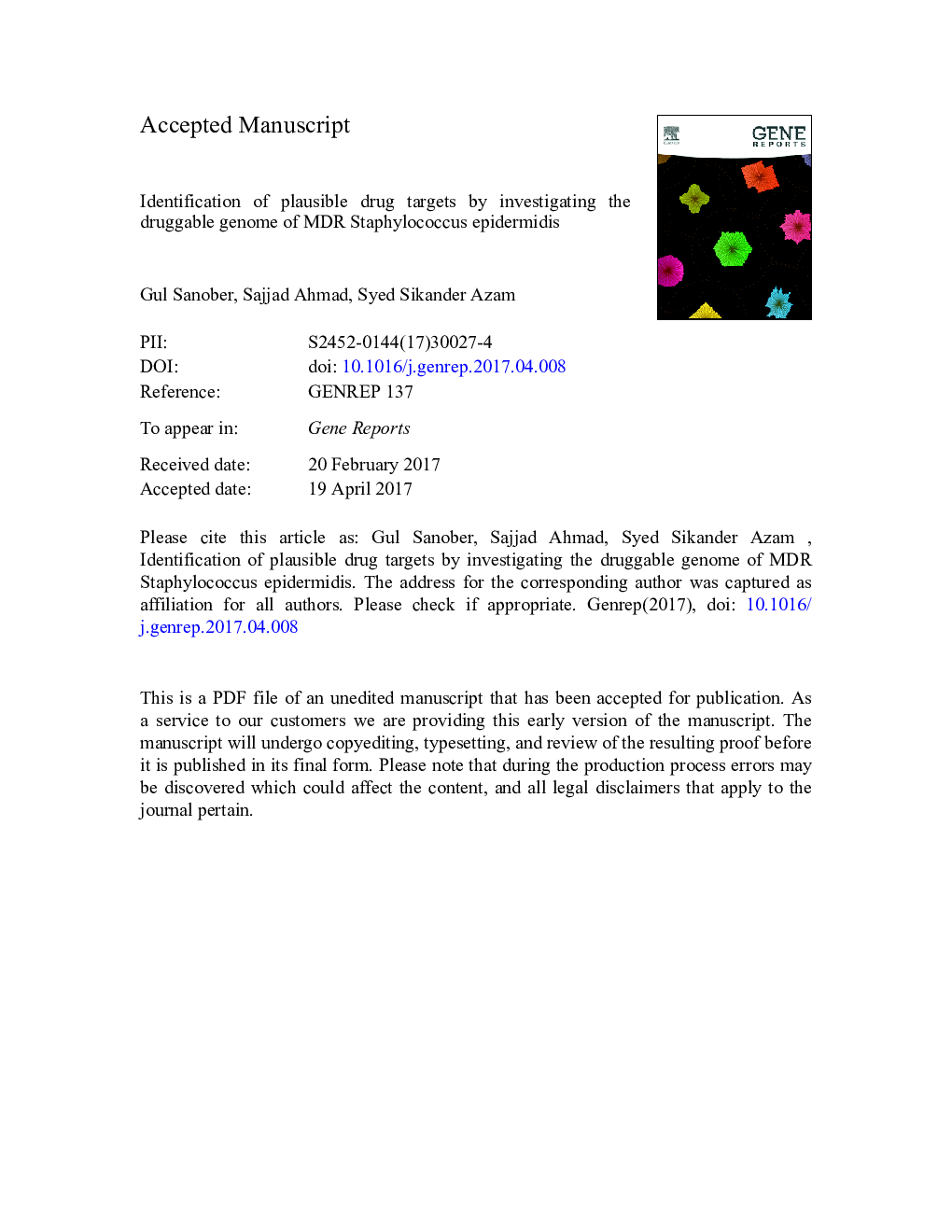| Article ID | Journal | Published Year | Pages | File Type |
|---|---|---|---|---|
| 5590054 | Gene Reports | 2017 | 29 Pages |
Abstract
Staphyloccocus epidermidis is recently recognized as opportunistic and multidrug resistant pathogen. In hospital settings, the pathogen is notorious for forming biofilm on indwelling medical devices causing fatal complications including bacteremia and prosthetic valve endocarditis (PVE). In the present study, we proposed potential drug targets in S. epidermidis by computer aided, step-wise subtraction of bacterial proteome to few druggable proteins. The ultimate target was to search for non-host proteins followed by their essentiality in survival and subsequent involvement in unique bacterial pathways. The shortlisted 27 proteins in 11 unique pathways were later characterized for druggable potential. Total 15 cytoplasmic targets were selected from the previous set and were further characterized on the basis of known 3D structures and high percentage coverage and increased percentage sequence identity, in case of unknown experimental structures. Only cell division protein ftsZ was retrieved to have resolved 3D structure. Proteins with high coverage and increased sequence identity were alanine racemase, d-alanine-d-alanine ligase, tRNA dimethylallyltransferase, phosphoenolpyruvate-protein phosphotransferase and response regulator protein vraR. The highly specific proteins screened out in our study, will presumably accelerate the unraveling of novel therapeutic drugs against S. epidermidis.
Keywords
Related Topics
Life Sciences
Biochemistry, Genetics and Molecular Biology
Genetics
Authors
Gul Sanober, Sajjad Ahmad, Syed Sikander Azam,
